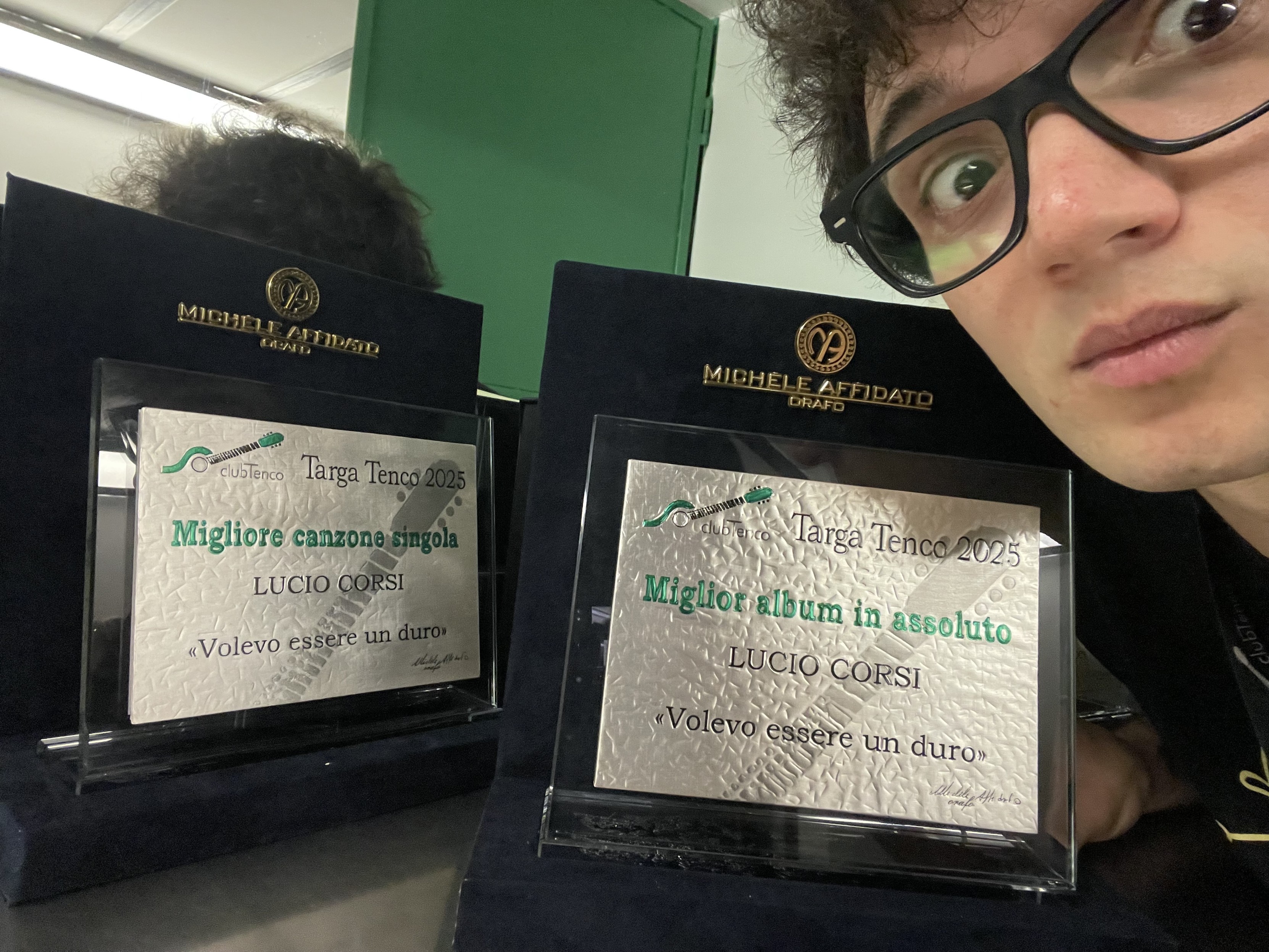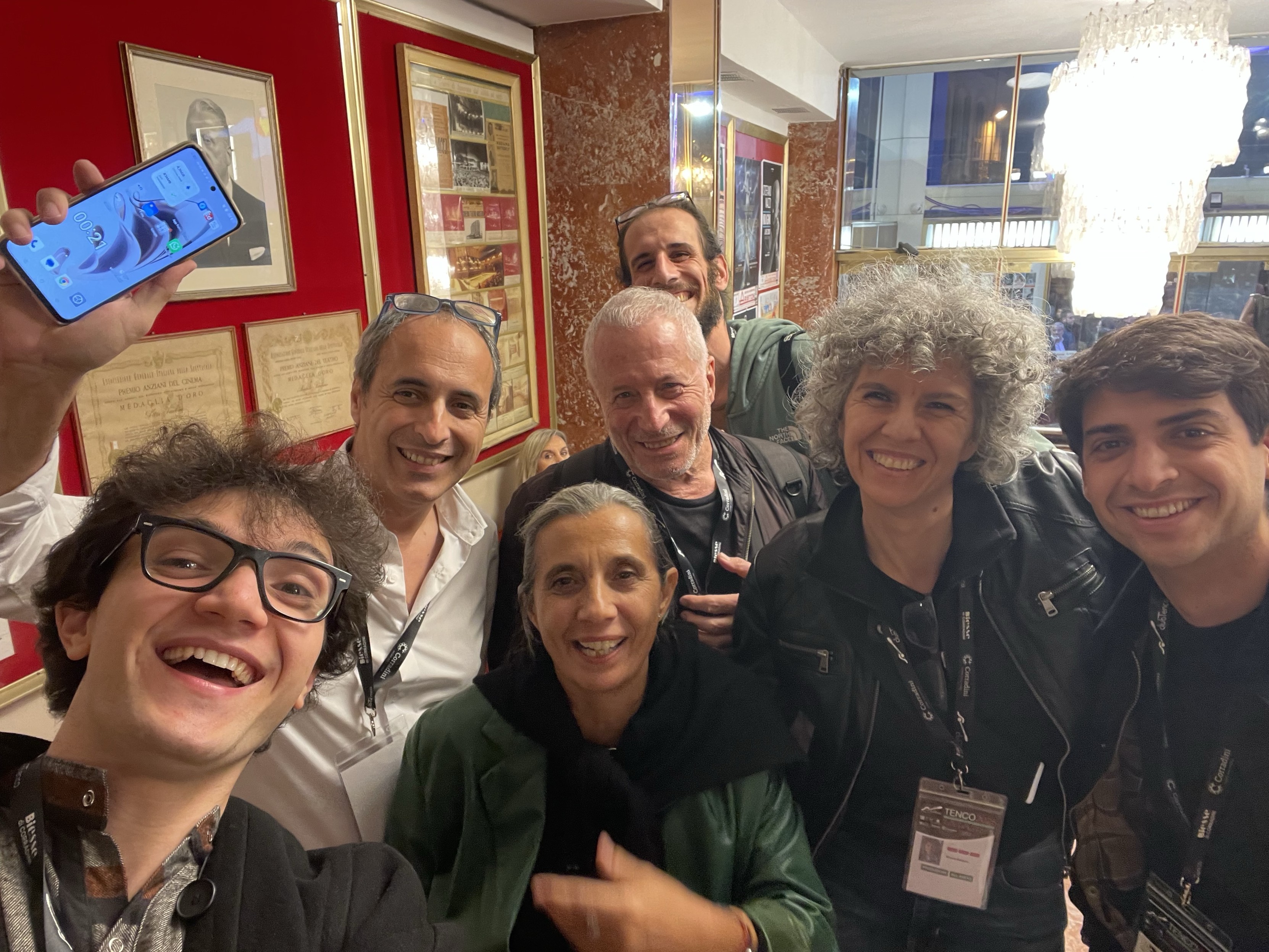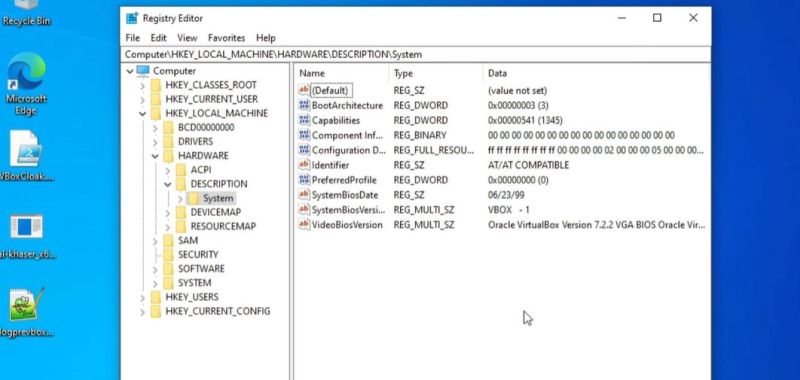Tenco 2025, thread
-
Tenco 2025, thread
Fotine videini e persone matte dalla Rassegna della Canzone d’Autore
-
Tenco 2025, thread
Fotine videini e persone matte dalla Rassegna della Canzone d’Autore
Sound check di Goran Bregović (ieri)
Che ridere, sono andato in camerino ad aprirgli una bottiglia di vino perché non aveva il cavatappi e gli ho detto che Kalashnikov mi fa commuovere, lui ha detto grazie ma ovviamente il tutto è stato molto goffo e quasi grottesco ahah
-
Sound check di Goran Bregović (ieri)
Che ridere, sono andato in camerino ad aprirgli una bottiglia di vino perché non aveva il cavatappi e gli ho detto che Kalashnikov mi fa commuovere, lui ha detto grazie ma ovviamente il tutto è stato molto goffo e quasi grottesco ahah
Aaaaaah Lucio
è veramente super chill e super caro… Gli ho portato una bottiglietta d’acqua mentre faceva le prove e mi fa: “noi ci siamo già visti…” e io: “belin, che memoria! Era al Tenco 2023” (Non è nato sul palco del Festival. È venuto all’Ariston già prima a cantare e bere vino con noi 💕)
Cameo di parte dello staff di @scambi
-
 undefined Oblomov shared this topic on
undefined Oblomov shared this topic on
 undefined Majden 🍉🎨🕊👠 shared this topic on
undefined Majden 🍉🎨🕊👠 shared this topic on
-
Aaaaaah Lucio
è veramente super chill e super caro… Gli ho portato una bottiglietta d’acqua mentre faceva le prove e mi fa: “noi ci siamo già visti…” e io: “belin, che memoria! Era al Tenco 2023” (Non è nato sul palco del Festival. È venuto all’Ariston già prima a cantare e bere vino con noi 💕)
Cameo di parte dello staff di @scambi
Primo dopo Tenco, ieri sera. Con Irma, @ceci e Totta.
(mi dicono il batterista sia lo stesso di Leonard Cohen 👀)
-
Primo dopo Tenco, ieri sera. Con Irma, @ceci e Totta.
(mi dicono il batterista sia lo stesso di Leonard Cohen 👀)
Dall’ingresso dell’Ariston al palco, passando dietro le quinte.
La magia di questo teatro è esaltata da quella del Tenco…
#Tenco #PremioTenco #ClubTenco #Ariston #Sanremo #TeatroAriston #teatro
-
Dall’ingresso dell’Ariston al palco, passando dietro le quinte.
La magia di questo teatro è esaltata da quella del Tenco…
#Tenco #PremioTenco #ClubTenco #Ariston #Sanremo #TeatroAriston #teatro
Ultima conferenza stampa del Tenco 2025, con Daniele Silvestri
(mi sto perdendo questo #LinuxDay per un buon motivo…)



